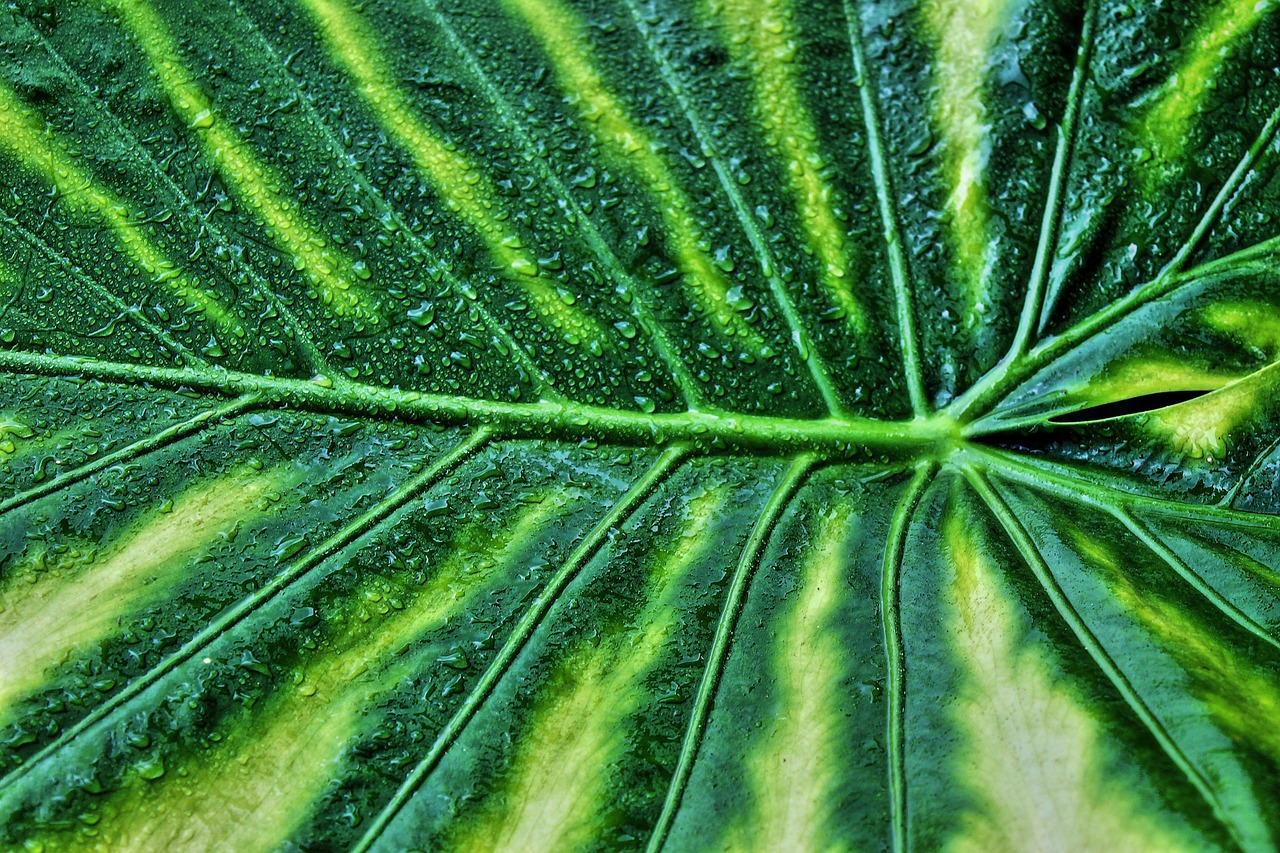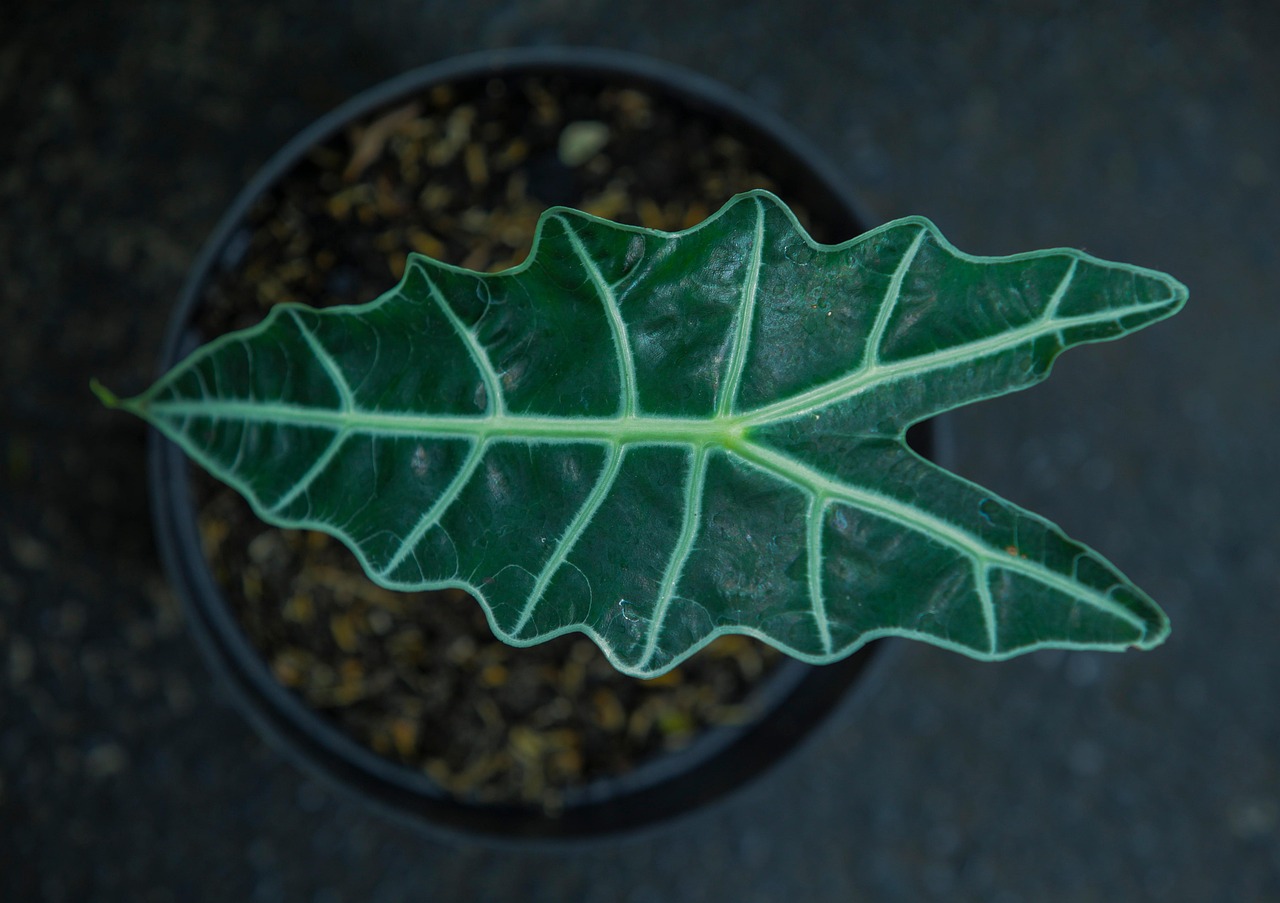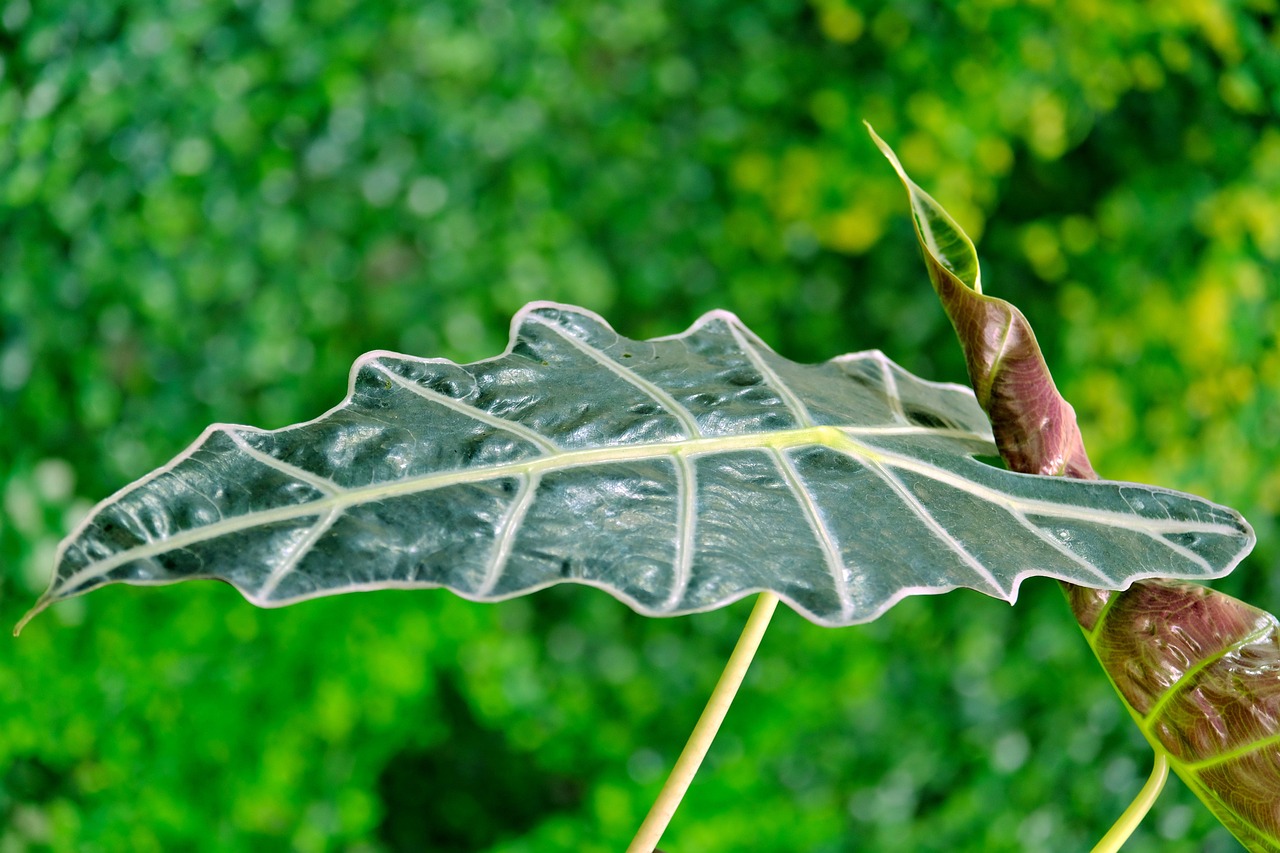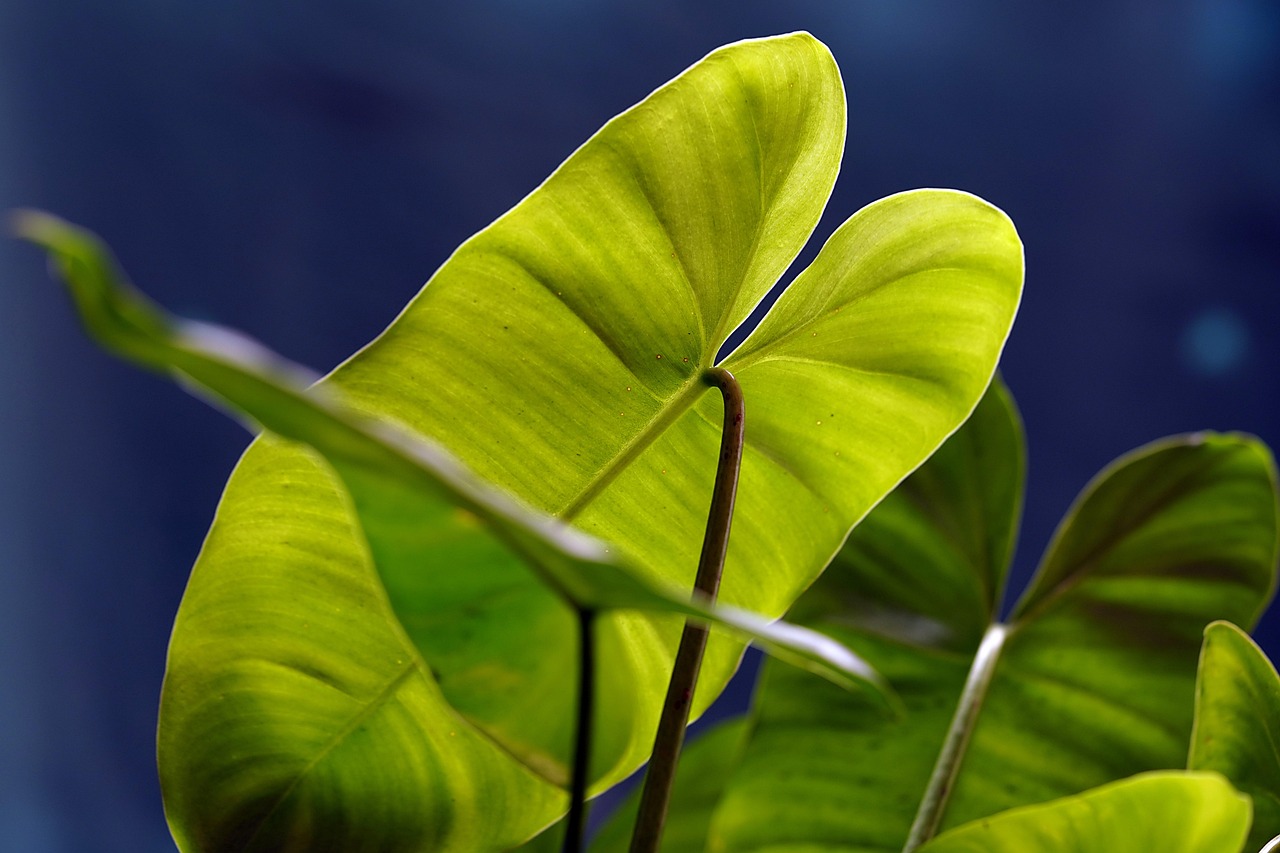The Alocasia California plant thrives indoors with proper care, requiring bright indirect light, well-draining soil, and consistent humidity. Regular watering and occasional fertilization promote healthy growth, making it a stunning addition to any indoor space.
The Alocasia California, also known as the African Mask Plant, is a striking houseplant recognized for its large, arrow-shaped leaves that can add an exotic touch to your home. Native to tropical regions, this plant has become popular among indoor gardeners due to its unique appearance and relatively straightforward care requirements. However, understanding its specific needs is vital to ensure it flourishes in your living environment.
Alocasia California can grow quite large, often reaching heights of up to three feet. Its glossy, dark green leaves are adorned with prominent veins, giving it a dramatic look. This plant prefers warm temperatures and high humidity levels, which mimic its natural habitat. If you’re considering adding this beautiful plant to your collection, it’s essential to learn how to provide the right conditions for optimal growth.
Understanding the Alocasia California Plant

Before diving into care tips, it’s helpful to understand some key characteristics of the Alocasia California plant. Here are a few important facts:
| Characteristic | Description |
|---|---|
| Common Name | Alocasia California |
| Light Requirements | Bright, indirect light |
| Watering Needs | Keep soil slightly moist; avoid overwatering |
| Humidity Level | High humidity preferred (60% or higher) |
| Ideal Temperature | 65°F to 80°F (18°C to 27°C) |
| Toxicity | Moderately toxic to pets if ingested |
This table summarizes essential characteristics of the Alocasia California plant. Knowing these details helps you create the perfect environment for your plant. The right amount of light, humidity, and temperature can significantly influence its growth and overall health.
When it comes to lighting, the Alocasia California prefers bright but indirect sunlight. Direct sunlight can scorch its leaves, leading to damage. If you notice the leaves turning yellow or brown, it may be a sign that the plant is receiving too much light. Instead, place it near a window where it can benefit from filtered sunlight.
Watering is another critical aspect of Alocasia care. It’s important to allow the top inch of soil to dry out between waterings. Overwatering can lead to root rot, which is one of the most common issues for this plant. During the growing season, which typically runs from spring to summer, you may need to water more frequently. In contrast, reduce watering in the fall and winter when the plant’s growth slows.
Humidity is vital for the Alocasia California. Since it thrives in its native tropical environment, maintaining high humidity levels is crucial. If your home has low humidity, consider using a humidifier or placing a pebble tray filled with water beneath the pot. This method increases moisture in the air surrounding the plant.
Fertilizing your Alocasia California also promotes healthy growth. Use a balanced liquid fertilizer every four to six weeks during the growing season. Be cautious not to over-fertilize, as this can lead to nutrient buildup and harm the plant.
By understanding these basic care requirements, you can help your Alocasia California thrive indoors. Paying attention to its light, water, humidity, and fertilization needs will ensure that your plant remains healthy and continues to beautify your space with its stunning foliage.
Common Pests and Diseases
The Alocasia California plant, while generally robust, can be susceptible to certain pests and diseases. Identifying these issues early is crucial in order to prevent serious damage. Here are some common pests that may affect your plant:
- Spider Mites: These tiny pests thrive in dry conditions. They can cause yellowing leaves and fine webbing on the plant.
- Mealybugs: Resembling small clumps of cotton, these pests suck sap from the leaves. This can lead to stunted growth and a sticky residue on the leaves.
- Scale Insects: Scale insects appear as small, round bumps on the stems and leaves. They also feed on the plant’s sap, weakening it over time.
- Fungus Gnats: These small flies are often mistaken for fruit flies. Their larvae feed on plant roots, which can harm the overall health of the plant.
To manage these pests, regularly inspect your Alocasia California for signs of infestation. If you notice any of these pests, consider the following control methods:
- Manual Removal: For small infestations, you can wipe off pests with a damp cloth or use a cotton swab dipped in alcohol.
- Insecticidal Soap: Apply insecticidal soap to the affected areas to eliminate pests without harming the plant.
- Neem Oil: This natural pesticide helps combat various pests while promoting plant health.
- Sticky Traps: Place yellow sticky traps near the plant to catch fungus gnats and monitor their population.
Diseases to Watch For
Aside from pests, Alocasia California can face diseases primarily due to improper care. Here are some common diseases and their causes:
- Root Rot: This disease occurs when the roots are waterlogged. Symptoms include yellowing leaves and mushy roots.
- Leaf Spot: Caused by fungal infections, leaf spots appear as dark brown or black patches on the leaves.
- Powdery Mildew: This fungal disease shows up as a white powdery substance on the leaves, indicating high humidity or poor air circulation.
To prevent these diseases, ensure good drainage in your potting mix and avoid overwatering. Additionally, maintaining proper airflow around the plant can help reduce humidity levels and prevent fungal infections.
Repotting Your Alocasia California
As your Alocasia California grows, it may outgrow its pot. Repotting is essential to provide fresh soil and more space for root development. Here are some signs that indicate it’s time to repot:
- The roots are growing out of the drainage holes.
- The plant has become top-heavy or unstable.
- The soil appears compacted or depleted of nutrients.
When repotting, follow these steps to ensure a smooth transition for your plant:
- Select a New Pot: Choose a pot that is one size larger than the current one. Ensure it has drainage holes.
- Prepare Fresh Soil: Use a well-draining potting mix that retains some moisture but allows excess water to escape.
- Remove the Plant: Gently take the plant out of its current pot. Be careful not to damage the roots.
- Inspect the Roots: Check for any signs of root rot or damage. Trim off any unhealthy roots with clean scissors.
- Repot the Plant: Place the plant into the new pot and fill it with fresh soil. Water lightly to settle the soil around the roots.
After repotting, place your Alocasia California in a location with bright, indirect light and monitor its watering needs more closely as it adjusts to its new environment.
Caring for Alocasia California in Different Seasons
Caring for your Alocasia California may vary depending on the season. Understanding these seasonal needs can help you keep your plant healthy year-round.
Spring and Summer
During the active growing season, your Alocasia will require more attention.
- Water more frequently as the warmer temperatures encourage growth.
- Fertilize every four to six weeks to support new growth.
- Monitor for pests, as warmer weather can increase pest activity.
Fall and Winter
As temperatures drop, your plant’s growth slows down. Adjust your care routine accordingly:
- Reduce watering frequency as the soil takes longer to dry out.
- Avoid fertilizing during this period, as the plant is not actively growing.
- Ensure your plant is not exposed to cold drafts or extreme temperature changes.

By adapting your care routine to seasonal changes, you can help your Alocasia California thrive throughout the year.
Propagation Techniques for Alocasia California
Propagating your Alocasia California can be a rewarding experience, allowing you to grow new plants from your existing one. There are several methods for propagation, each with its own benefits. The two most common techniques are division and offsets.
Division Method
Dividing your Alocasia California is a straightforward method that involves separating the plant into multiple sections. This is best done during the spring or early summer when the plant is actively growing. Here’s how to do it:
- Prepare Your Tools: Gather a clean, sharp knife or garden shears, fresh potting soil, and new pots.
- Remove the Plant: Gently take the Alocasia out of its pot, being careful not to damage the roots.
- Inspect the Roots: Look for natural divisions in the root ball. Each section should have at least one healthy leaf and a good root system.
- Make the Cuts: Use your knife or shears to divide the root ball into sections. Ensure each division has roots attached.
- Repot the Sections: Plant each division in its own pot with fresh potting soil. Water lightly to settle the soil.
After dividing, monitor the moisture levels closely as the new divisions may need time to adjust to their new environment.
Offsets Method
Offsets are small plants that form at the base of the main plant. This method is another effective way to propagate your Alocasia California. Here’s how to do it:
- Identify Offsets: Look for small shoots emerging from the base of the plant.
- Remove the Parent Plant: Carefully take the main plant out of its pot to access the offsets.
- Separate the Offsets: Gently pull or cut the offsets away from the parent plant. Make sure they have some roots attached.
- Plant the Offsets: Place each offset in a small pot with well-draining soil. Water lightly to establish them.
Offsets are usually quicker to establish than divisions and can grow into beautiful new plants in no time.
Common Mistakes to Avoid
Caring for an Alocasia California requires attention to detail. Here are some common mistakes to avoid that can hinder your plant’s growth:
- Overwatering: This is one of the most common issues with houseplants. Always check if the top inch of soil is dry before watering.
- Ignoring Humidity Needs: Alocasia plants thrive in high humidity. If your home is dry, consider using a humidifier or placing a tray of water nearby.
- Inadequate Lighting: Ensure your plant receives bright, indirect light. Direct sunlight can scorch its leaves, while too little light can stunt growth.
- Neglecting Fertilization: During the growing season, regular fertilization is necessary for healthy growth. Skipping this step can lead to nutrient deficiencies.
Pest Control Neglect
Pests can quickly become a problem if not addressed promptly. Regularly inspect your plant for signs of infestation and take action as soon as you notice any issues. Prevention is key; keeping your plant healthy reduces the risk of pests.
Decorating with Alocasia California
The Alocasia California is not only a beautiful houseplant but also an excellent choice for enhancing your home decor. Here are some creative ways to incorporate this stunning plant into your living space:
- Create a Focal Point: Place a large Alocasia in a decorative pot in a prominent location, such as a living room or foyer, to draw attention.
- Group with Other Plants: Combine it with other houseplants like ferns or pothos to create a lush indoor garden.
- Add Height Variation: Use stands or pedestals to elevate your Alocasia, creating visual interest through varying heights.
- Style with Colorful Pots: Choose colorful or textured pots that complement your home’s color scheme, enhancing the overall aesthetic.
By thoughtfully placing your Alocasia California in your home, you can enjoy its beauty while also benefiting from its air-purifying qualities.
Frequently Asked Questions
If you are

new to caring for an Alocasia California, you may have some questions. Here are answers to some frequently asked questions:
- How often should I water my Alocasia California?
Water when the top inch of soil feels dry. Adjust frequency based on seasons and humidity levels. - What should I do if my leaves are turning yellow?
This could indicate overwatering or insufficient light. Check both conditions and adjust accordingly. - Can I keep my Alocasia California outside?
If you live in a tropical or subtropical climate, it can be kept outdoors during warm weather but should be brought indoors in colder months.
Caring for an Alocasia California can be a fulfilling endeavor when proper techniques and knowledge are applied. Enjoy the beauty and elegance that this unique plant brings to your home!
Additional Tips for Thriving Alocasia California
To ensure y

our Alocasia California not only survives but thrives, consider implementing the following additional tips:
- Rotate Your Plant: Every few weeks, rotate your Alocasia California to promote even growth. This helps all sides of the plant receive equal light exposure, preventing it from leaning toward the light source.
- Clean the Leaves: Dust can accumulate on the large leaves, hindering photosynthesis. Gently wipe the leaves with a damp cloth to keep them clean and healthy.
- Monitor for Stress Signs: Be attentive to signs of stress, such as drooping leaves or stunted growth. Identifying issues early can help you address them before they escalate.
- Use a Well-Draining Soil: When planting or repotting, always use a soil mix that allows for proper drainage. A mix containing perlite or orchid bark works well for Alocasia California.
By following these practices, you can create an environment that supports the health and growth of your Alocasia California, enhancing both its beauty and longevity.
Final Thoughts
Caring for an Alocasia California can be an enjoyable and rewarding experience. With its dramatic foliage and unique appearance, this plant can serve as a stunning centerpiece in your home. Remember that understanding its specific needs—such as light, water, humidity, and temperature—will greatly contribute to its success as an indoor plant.
As you cultivate your Alocasia California, keep in mind that patience and observation are key. Each plant has its own personality and may respond differently to care. Regularly check for pests and diseases, and take proactive steps to maintain optimal conditions.
Moreover, don’t hesitate to experiment with propagation methods. Whether through division or offsets, sharing your plant with friends or expanding your collection can add to your enjoyment. The more you engage with your Alocasia California, the more you will learn about its preferences and habits.
In summary, the Alocasia California is not just another houseplant; it is a vibrant addition that can enhance your living space while purifying the air. By following the guidelines provided in this care guide, you can ensure that your plant remains healthy and thrives for years to come. Enjoy the journey of indoor gardening with your Alocasia California!
